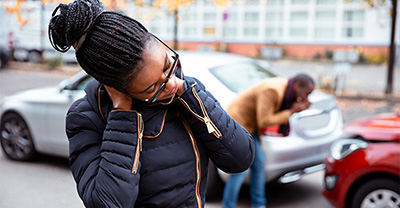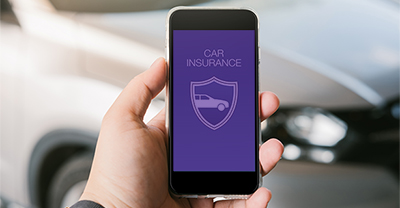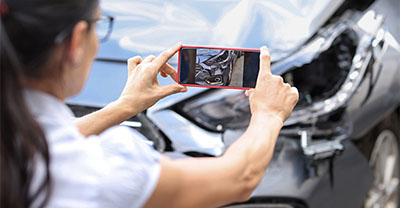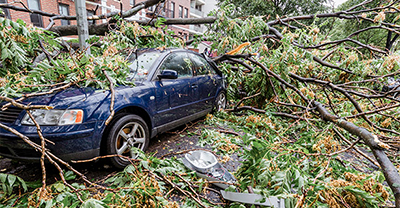Bodily injury liability insurance


What is bodily injury liability insurance?
Bodily injury liability insurance helps protect you against expenses and damages a person might claim against you due to injuries they sustain in an auto accident you cause. When you purchase an insurance policy, your state likely requires you to purchase liability insurance.
What does bodily injury liability cover?
If you cause an accident and the other driver or their passenger is injured, your BI liability insurance can help cover you for the cost of their medical and recovery claims, and even legal fees if you’re sued.
Your coverage helps protect you—the policyholder—if the other party’s insurance company pursues you for payment following an accident they believe you were responsible for. Common types of expenses that an injured person might try to claim against you include:
Medical expenses
Loss of income
Pain and suffering
Legal fees
Funeral costs
What doesn't it cover?
Bodily injury liability insurance doesn’t cover the following in an accident you cause:
Your own medical costs
Your passengers’ medical costs—refer to your policy to determine whether your passengers are covered, and under what circumstances
Damage to vehicles—yours or others’
It helps to consider the following types of insurance coverages—which can supplement BI liability—to help keep you, your passengers, and your vehicle protected in most incidents:
Medical payments/Personal injury protection (PIP)

Learn the differences between liability and “full coverage” car insurance.
Is bodily injury liability required?
Most states require a minimum amount of bodily injury liability coverage. The amount you’re required to hold as a car owner depends on where you live and where your vehicle is registered.
Coverage limits
Coverage limits establish the maximum amount your insurance company will cover for each type of coverage. The first two of the three numbers indicate the limits of your BI insurance.
For example, the insurance requirements in Texas are 30/60/25. This means:
Per person limit
The maximum amount your insurance will pay in BI liability per person in an accident is $30,000.
Per accident limit
The maximum amount your insurance will pay in BI liability per accident is $60,000.
Property damage liability limit
The third number refers to your property damage liability limit—in this case, $25,000.
If you aren’t comfortable holding only your state’s minimum insurance limit requirements, you can always increase your coverage limits. Talk to your insurance provider for more information about adjusting your limits.
Bodily injury liability insurance in Florida
Florida is unique in that it’s currently the only state that requires drivers to carry auto insurance, but doesn’t require bodily injury liability. Drivers in Florida are only required to carry:
$10,000 property damage liability per accident
$10,000 personal injury protection (PIP)
If you’re a Florida resident and you choose to carry optional bodily injury liability coverage, your maximum liability limits are:
$100,000 bodily injury liability per person
$300,000 bodily injury liability per accident
$100,000 property damage liability per accident
How much does bodily injury liability coverage cost?
Like other types of car insurance coverages, the amount you pay for your bodily injury liability coverage depends on several factors, including but not limited to:
Your driving history
Your insurance provider
Where you live
Current consumer pricing for bodily injury liability insurance coverage varies by state, even when many other factors are similar.
To give you an idea of this variance, let’s say the same hypothetical driver receives an insurance quote for bodily injury liability coverage in three states. Their age, driving history, license status, and other information are the same in all three cases, but their quotes could come back as:
Florida: $425 per year, or $35 per month
Texas: $450 per year, or $37 per month
Wisconsin: $480 per year, or $40 per month
Keep in mind that these rates apply to bodily injury liability coverage alone, and don’t include property damage coverage. Also, these insurance quotes are hypothetical, based on state- and industry-specific pricing trends.

Get a free car insurance quote today.
What’s the difference between bodily injury liability and property damage liability?
Both are types of liability coverage. Bodily injury is the part that applies when other people are injured; property damage is the part that applies to the other person's property following a covered accident.
When you purchase an auto liability insurance policy, it commonly includes two types of coverage:
Bodily injury liability coverage—which applies when other drivers, passengers, or pedestrians are injured in an accident you cause
Property damage liability, which helps pay for damage to those individuals’ property following a covered accident.
BI liability vs. medical payments coverage
Bodily injury liability helps cover you for damages another party can legally claim against you for injuries they sustain in an accident you cause. Medical payments coverage, on the other hand, is in place to help pay for medical expenses related to injuries you or your passengers sustain, regardless of who’s at fault in the accident.
As we noted above, bodily injury liability is almost always required, whereas medical payments coverage is typically optional. In some states, medical payments coverage isn't available, with personal injury protection (PIP) coverage often available instead.
Contact us to discuss adding medical payment coverage or other auto coverages to your policy.
Filing a bodily injury liability claim
When you get in an accident involving another driver, you typically exchange insurance information with them. If that person and/or their passenger is injured, they can reach out to your insurance provider to file a bodily injury liability claim. Here are the steps you can expect to take:
Make the call: After an accident, call us at 800-334-0090 to report your auto insurance claim.
Answer a few questions: We’ll ask some initial questions and then connect you with a member of our knowledgeable claims team.
Receive your review and move forward: The claims associate will review your policy and work with you to determine what you should do next.
Bodily injury liability insurance is an important part of your insurance policy—and not just because it’s required in nearly every state. It helps ease your financial burden if others are injured in incidents you're at fault for. And considering how stressful the post-accident process can be, benefits like that can go a long way.
Bodily injury liability FAQs
Do I need BI and PD liability insurance?
Yes, you most likely need both types of liability coverage. Most states require you to carry auto liability insurance, which generally includes both bodily injury and property damage liability coverages.
Review your state auto insurance requirements to determine whether you need liability coverage—and also for guidance when choosing other coverages to add to your policy.
How much bodily injury liability insurance do I need?
That depends on where you live and what you’re required to purchase. What you need will be based on your financial situation, whether you own or lease your vehicle, and other factors. Like many types of auto coverage, minimum coverage requirements for bodily injury liability insurance vary by state. Check your state auto insurance requirements or get in touch with us to learn more.
What if my car is totaled and I only have liability?
It depends on how your car was damaged. If another driver was at fault, you can file a claim with their insurance company to help pay for the damage to your vehicle. If not, you’ll likely need to pay out of pocket and replace your car yourself.
How much does insurance pay for bodily injury?
Following a covered accident in which you were at fault, bodily injury liability insurance can help pay for other individuals’ injuries and related expenses up to the limits on your policy.
Your state establishes the minimum amounts of coverage you need to carry on a per-person and per-accident basis, but you can increase that amount by purchasing more coverage. If the costs related to the accident exceed your coverage amounts, you’ll likely need to pay out of pocket.
The general information in this blog is for informational or entertainment purposes only. View our blog disclaimer.
*Data accuracy is subject to this article's publication date.









